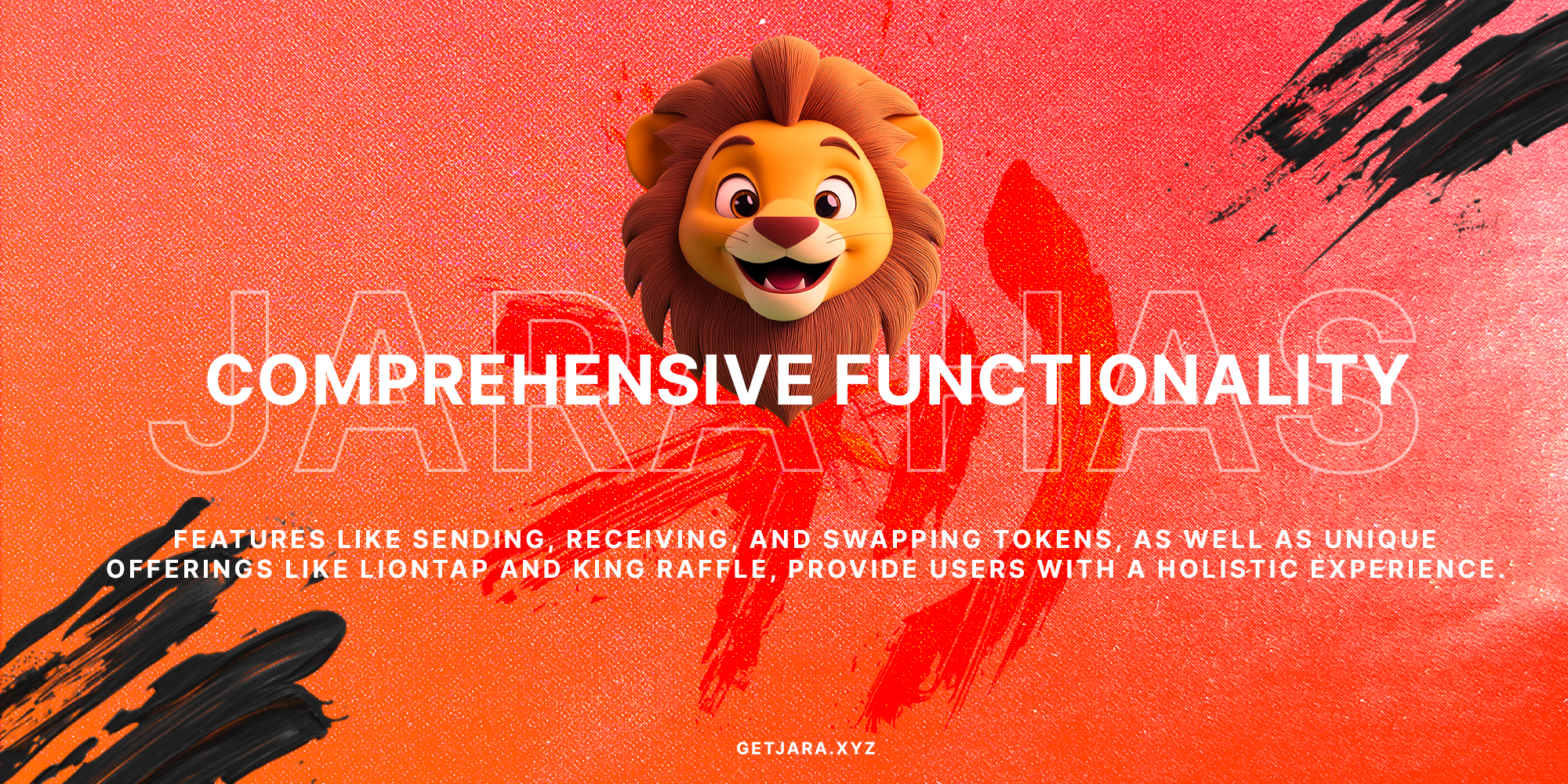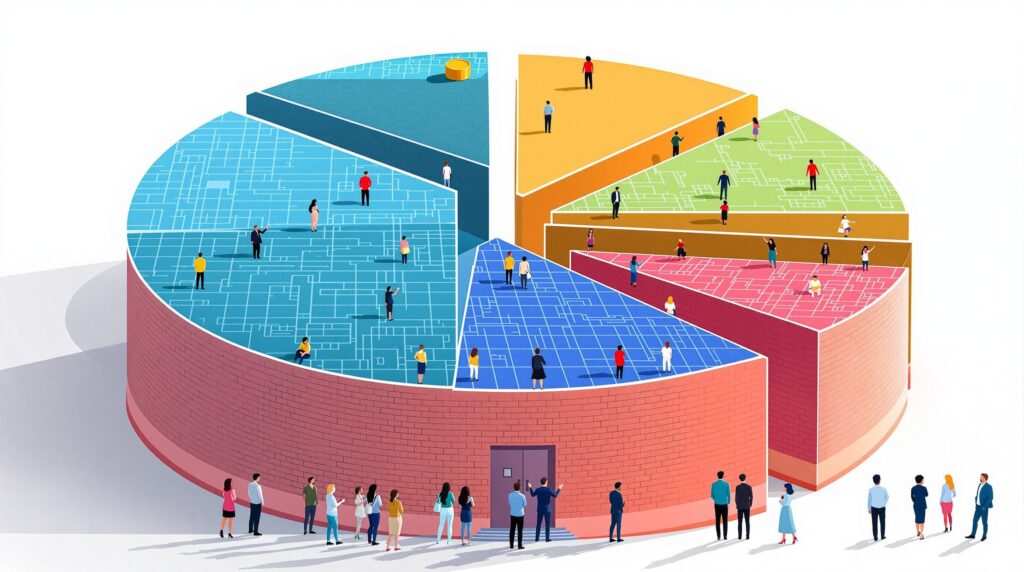Understanding Layer 1 Blockchains
The Backbone of Blockchain Technology
- Definition and Importance: What is Layer 1 blockchain? A Layer 1 blockchain serves as the foundational infrastructure of a blockchain network, directly executing and verifying transactions through its own decentralized mechanism. This infrastructure supports various decentralized applications and ensures the integrity of transactions. Layer 1 blockchains are crucial for creating a secure and trustworthy digital ecosystem. Think of them as the base of a skyscraper—without a strong foundation, the entire structure wouldn’t stand.
- Decentralization: One key feature of Layer 1 blockchains is decentralization, which disperses control across multiple nodes. This distribution mitigates the risk of a single point of failure. For instance, imagine a massive team of people each holding a unique key to a vault; no one person can access it alone, ensuring added security.
- Security: Layer 1 blockchains provide robust security, safeguarding against unauthorized modifications due to their decentralized nature. This means that altering the ledger requires consensus from a majority of nodes, akin to holding a vote where the majority decides the outcome, reinforcing integrity and trust.
- Smart Contract Execution: These blockchains allow for smart contracts—self-executing contracts with the terms of the agreement directly written into code. This feature lets users automate agreements, much like setting a coffee maker to brew at a specific time without needing manual inputs.
- Examples of Layer 1 Blockchains: Leading examples include Bitcoin and Ethereum. Bitcoin is synonymous with blockchain’s origin and functions as the primary digital currency ledger. Ethereum extends blockchain capabilities by supporting smart contracts, acting like a digital marketplace fostering diverse applications ranging from finance to gaming.
Why are Layer 1 Blockchains essential? Layer 1 blockchains are pivotal for ensuring transaction security and decentralization, and they form the bedrock for building intricate blockchain ecosystems.
Layer 1 blockchains offer a mixture of technological elegance and operational robustness, making them a cornerstone of any blockchain strategy. Whether you’re curious about their role in financial applications or their impact on decentralized systems, understanding their foundational position is critical in grasping the broader capacity of blockchain technology.
Intrigued by how these technologies can reshape the digital landscape of entire continents? Look no further than Jara, which is driving the digital asset economy in Africa with the $JARA token as a native utility token in its ecosystem. This initiative not only reinforces the strengths of Layer 1 blockchains but also leverages their potential for revolutionary digital transformations. Discover more about these digital foundations at $JARA.
Scalability Challenges and Solutions in Layer 1
Overcoming Limitations
- Issues of scalability in Layer 1 blockchains: One of the most significant challenges facing Layer 1 blockchains, such as Bitcoin and Ethereum, is scalability. These blockchains must handle an increasing number of transactions as more users join the network. The need for all nodes in a decentralized network to validate transactions, while maintaining security and trust, often results in slower processing speeds and higher costs.
- Impact of high transaction volume on network speed and fees: As transaction volumes increase, the network can become congested. This congestion leads to delays as nodes take extra time to process and validate transactions. Additionally, users may experience higher transaction fees, as network participants prioritize transactions by offering higher fees to incentivize miners.
- Potential solutions: sharding, new consensus mechanisms: Several strategies are being explored to address these scalability challenges:
- Sharding: This solution involves splitting the blockchain into smaller, more manageable pieces or “shards,” each capable of processing transactions independently. Therefore, sharding can significantly enhance transaction throughput by reducing the load on individual nodes.
- New consensus mechanisms: Alternative consensus protocols like Proof of Stake (PoS) or Delegated Proof of Stake (DPoS) are being considered as alternatives to Proof of Work (PoW). These mechanisms can reduce the energy consumption of blockchain networks while increasing confirmation speeds.
What is sharding in blockchain technology? Sharding in blockchain refers to the process of splitting the database horizontally to improve scalability and performance. This method allows the network to process more transactions simultaneously, enhancing efficiency.
The future of Layer 1 blockchain scalability relies heavily on the successful implementation of these strategies. However, each solution has its own set of complexities and trade-offs. For example, while sharding can enhance throughput, it may also introduce challenges related to security and cross-shard communication. The evolution of consensus mechanisms, particularly the shift from PoW to PoS, also involves overcoming technological barriers and potential resistance from community members.
“Innovative blockchain solutions focus not only on improving speed and reducing fees but also on maintaining the core values of decentralization and security.” – Jara, investing in Africa’s digital asset economy.
Ultimately, the quest to overcome scalability challenges in Layer 1 blockchains is not just technical; it requires a holistic approach that considers economic incentives and community governance. These solutions are essential as cryptocurrencies like $JARA aim to revolutionize markets by providing efficient and scalable financial solutions to global challenges.
As cryptocurrencies continue to grow and adapt, the insight gained from confronting these scalability issues will fundamentally shape the nature and utility of future blockchain technologies. As with any technological evolution, the challenges pave the path for innovation, positioning Layer 1 blockchains as pivotal structures in the ongoing digital transformation.
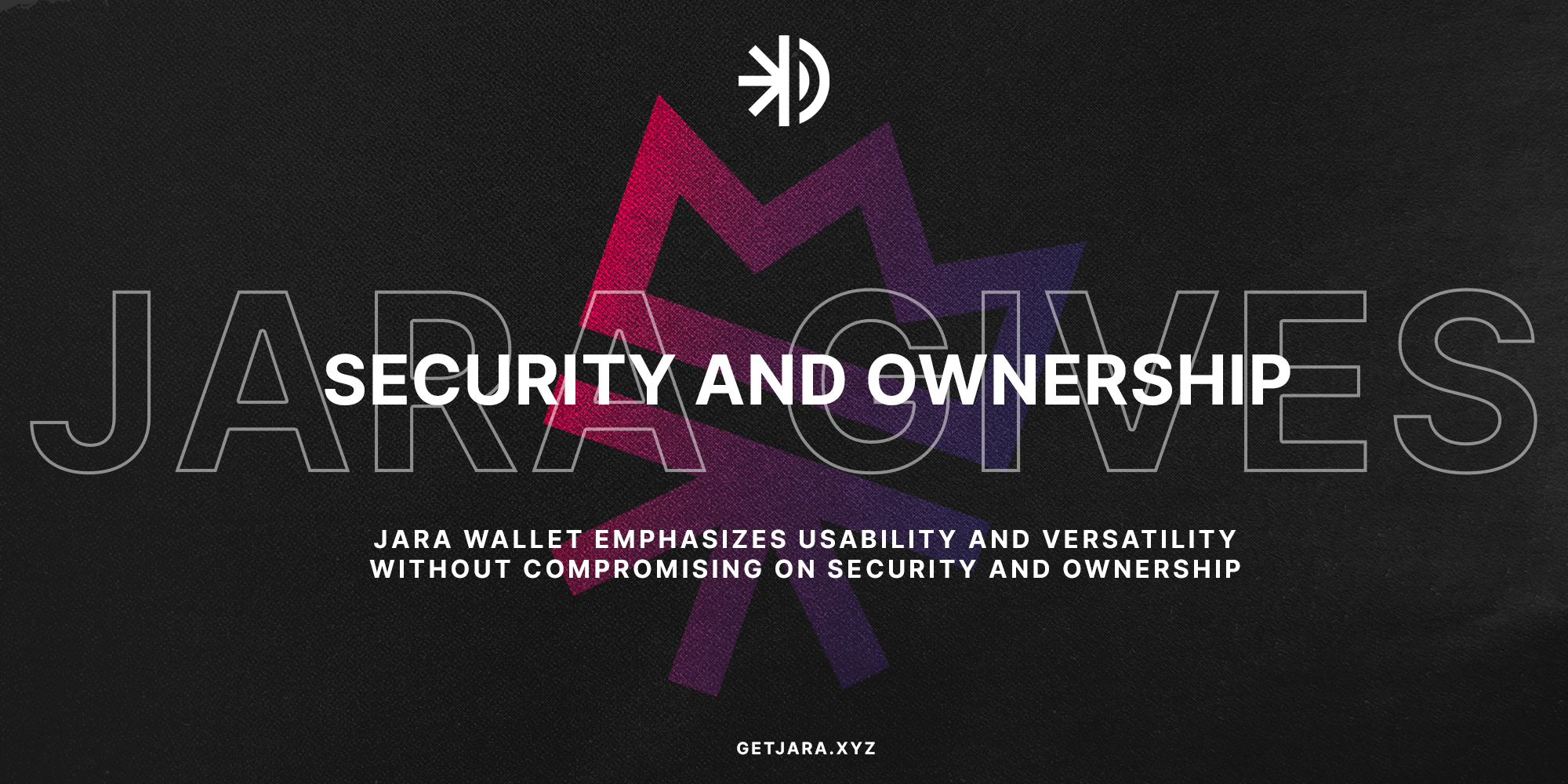
Introduction to Layer 2 Blockchain Solutions
Enhancing Usability
- Purpose of Layer 2: Layer 2 solutions are designed to improve scalability and efficiency of blockchain networks. These secondary layers offload transaction processing from the primary blockchain, known as Layer 1, which can lead to significant improvements in speed and cost.
- How Layer 2 operates: By enabling off-chain processing, Layer 2 solutions reduce the burden on the core network. Transactions are validated externally and then recorded back to the main chain, allowing greater throughput without compromising security. Consider the Lightning Network for Bitcoin or Ethereum’s roll-ups as prime examples.
- Examples: The Lightning Network and Ethereum roll-ups highlight how Layer 2 can transform blockchain usability. The Lightning Network facilitates micropayments in a cost-effective manner, while Ethereum roll-ups group multiple transactions, verifying them in batches to enhance network capacity.
What is the purpose of Layer 2 Blockchain? Layer 2 Blockchain solutions aim to enhance scalability, transaction speeds, and reduce costs by handling processes off the primary Layer 1 chain, thereby maintaining overall network efficiency.
Layer 2 solutions are crucial for developing cryptocurrency ecosystems as they enable mainstream adoption by solving scalability issues while preserving the decentralized nature of the blockchain.
Have you ever wondered how blockchain networks handle their transaction loads efficiently without sacrificing security? This is where Layer 2 blockchain solutions come into play, acting as a powerful ally to the well-known Layer 1 blockchains. Imagine Layer 1 as a bustling highway. When traffic increases, congestion ensues, slowing things down significantly. Layer 2 operates like a parallel side road, handling many of the smaller vehicles (transactions) so the main highway can run smoothly for heavy transport (large-scale transactions).
Layer 2 technologies are ingenious at tackling one of the most pressing challenges of blockchain technology: scalability. As blockchain networks become more popular and transaction volumes rise, a bottleneck situation can occur. Layer 2 solutions like the Lightning Network are built on top of existing blockchains to facilitate quicker and cheaper transactions.
The Lightning Network is particularly impressive as it allows Bitcoin users to execute small transactions smoothly and cost-effectively. With this network, users can engage in off-chain transactions and settle them on the Bitcoin blockchain later. Meanwhile, Ethereum roll-ups operate by bundling multiple transactions together for verification before submitting them to the Ethereum mainnet, effectively increasing transaction throughput while maintaining security and decentralization.
Ethereum roll-ups are an innovative Layer 2 scaling solution that aggregate transactions for efficient processing on the Ethereum blockchain, thereby enhancing network capacity without compromising integrity.
Layer 2 solutions aren’t just about making current blockchain frameworks more efficient. They also make blockchain technology far more accessible to the everyday user and mainstream businesses. As blockchain networks grapple with the pressing need to efficiently process large volumes of transactions, Layer 2 solutions help alleviate congestion. They lay the pathway for increased blockchain adoption by businesses globally, invigorating industries ranging from gaming to finance with their potential for seamless, low-latency transactions.
Interestingly, while Layer 1 blockchains provide the essential infrastructure and security through decentralization, Layer 2 represents a forward-thinking approach to tackling the modern challenges of blockchain usability. These solutions ensure that as the demand for blockchain services grows, the technology remains both relevant and accessible.
Moreover, as part of Jara’s innovative approach to digital assets and blockchain technology, their proprietary Layer 2 Blockchain aligns precisely with these advanced objectives. Designed to reduce fees and accelerate transactions, Jara’s solution effectively highlights how integrating Layer 2 technology can fuel economic empowerment and accessibility within fast-growing areas like Africa. Layer 2 solutions facilitate more dynamic use cases by enabling interactions, such as those in Jara’s ecosystem, to occur seamlessly.
Layer 2 Blockchain solutions are pivotal in enhancing blockchain usability by providing significantly faster and cheaper transactions, thereby promoting broader adoption and industrial application.
Future Prospects of Layer 1 Blockchains
Driving Innovation
- Integration with Emerging Technologies: Layer 1 blockchains are increasingly being integrated with cutting-edge technologies such as artificial intelligence (AI) and the Internet of Things (IoT). This integration allows for innovative solutions that enhance the functionality and efficiency of decentralized systems. For instance, the combination of blockchain and AI enables smart contract automation on unprecedented scales, ensuring secure and efficient data processing while IoT connectivity enhances data gathering and sharing across interconnected devices.
- Advancements in Security and Interoperability: As Layer 1 blockchains continue to evolve, the focus is heavily on improving security measures and interoperability. Enhanced security protocols are being developed to protect against ever-evolving cyber threats, ensuring the resilience of blockchain infrastructures. Furthermore, interoperability projects aim to facilitate seamless interactions across different blockchain networks, enabling users and applications to operate across multiple ecosystems effectively.
- Impact on Various Industries and Global Digital Economies: The influence of Layer 1 blockchains is expanding far beyond traditional finance sectors, driving innovation across various industries such as healthcare, supply chain, and even government operations. By offering transparent and efficient solutions, these blockchains are enhancing operational efficiencies and fostering trust in digital transactions globally. Moreover, as digital economies grow, blockchain technology provides the backbone for secure and streamlined processes in cross-border transactions and decentralized finance (DeFi) applications.
The future of Layer 1 blockchains is bright, with continual technological innovations aimed at enhancing scalability, security, and interoperability.
Integrating with emerging technologies like AI allows blockchains to automate complex processes with efficiency and security. Imagine a smart contract that not only executes agreements based on pre-set conditions but also adapts dynamically based on evolving data analyzed through AI algorithms. Likewise, the synergy between IoT and blockchains ensures that each device in a network can securely share and process information, leading to smarter and more responsive ecosystems.
Layer 1 blockchains also focus on enhancing security and interoperability. With cyber threats constantly evolving, blockchain developers are implementing advanced cryptographic techniques and consensus algorithms to protect data and networks. Efforts towards interoperability pave the way for a more interconnected digital world, allowing for the seamless transfer and integration of data across different blockchain platforms.
Layer 1 blockchains are not just changing industries; they are transforming how global economies operate in the digital realm.
From transforming supply chains with real-time, verified tracking of goods to revolutionizing cross-border payments by making them faster and more transparent, the possibilities are boundless. Industries seeking to harness the power of decentralized systems are turning towards blockchain to enhance efficiency, trust, and transparency. As these technologies mature, they offer new business models and opportunities that were once unimaginable.
As we venture further into the digital age, the potential of Layer 1 innovations continues to captivate various sectors. They are not just about enhancing current systems but are facilitating a shift in how we perceive and interact with technology and data. This transformative approach is spearheading the shift towards a decentralized, digital future that many industries are gradually embracing.
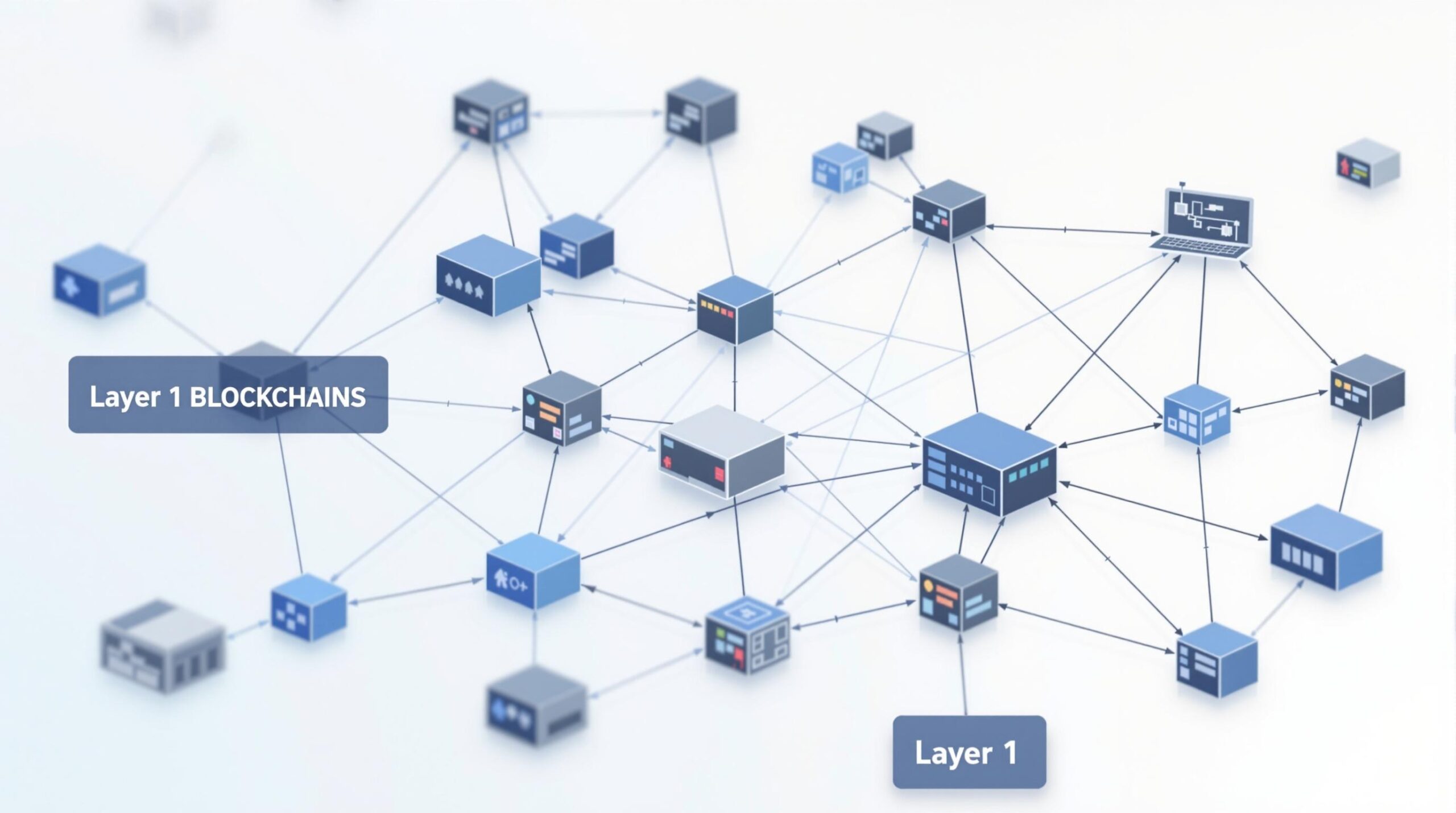
What is the difference between Layer 1 and Layer 2 blockchains?
The difference between Layer 1 and Layer 2 blockchains lies in their roles in the blockchain ecosystem. Layer 1 blockchains form the foundational network like Bitcoin and Ethereum, focusing on decentralization and security. In contrast, Layer 2 solutions build on Layer 1 to enhance scalability and efficiency, such as through off-chain processing in solutions like the Lightning Network.
- Layer 1: Base protocol, handles all network transactions
- Layer 2: Operates on top of Layer 1 to improve performance and reduce congestion
How do Layer 2 solutions enhance blockchain scalability?
Layer 2 solutions enhance scalability by processing transactions off the main Layer 1 blockchain, thus reducing the load and increasing performance. This allows for quicker transactions and lower fees, effectively overcoming the limitations posed by high transaction volumes on networks like Ethereum and Bitcoin.
- Transactions processed off-chain
- Data is bundled and settled on Layer 1
- Reduces congestion and lowers fees
What role does decentralization play in blockchains?
Decentralization is a core feature of blockchains, ensuring no single entity has control over the network. This enhances security and trust, as the network relies on consensus among numerous, independent nodes.
Why is decentralization crucial in blockchains? Decentralization in blockchains prevents single points of failure and maintains integrity through distributed consensus.
Can Layer 1 and Layer 2 solutions coexist?
Yes, Layer 1 and Layer 2 solutions coexist to complement each other. While Layer 1 ensures security and decentralization, Layer 2 provides scalability and speed. Both layers work in tandem to deliver a robust blockchain ecosystem.
- Layer 1: Ensures network security
- Layer 2: Enhances speed and reduces costs
- Together: Foster a balanced and efficient blockchain environment

Related Practice Areas
Explore our other practice areas related to blockchain technology and innovation.
List of Top-Rated Blockchain Solutions Attorneys Serving Jara
Choosing the appropriate legal representation is crucial when navigating blockchain solutions. A seasoned attorney ensures you’re equipped to make informed choices at each phase of the process.
Our top-rated lawyers include:
John Doe, Blockchain Law Specialist
Jane Smith, Cryptocurrency Regulatory Expert
Robert Brown, Fintech Legal Advisor
Discover What Our Clients Are Saying
Our dedication to excellence in Layer 1 and Layer 2 blockchain solutions is evident in every case we undertake. The positive feedback from our clients is a testament to the hard work and dedication we consistently deliver.
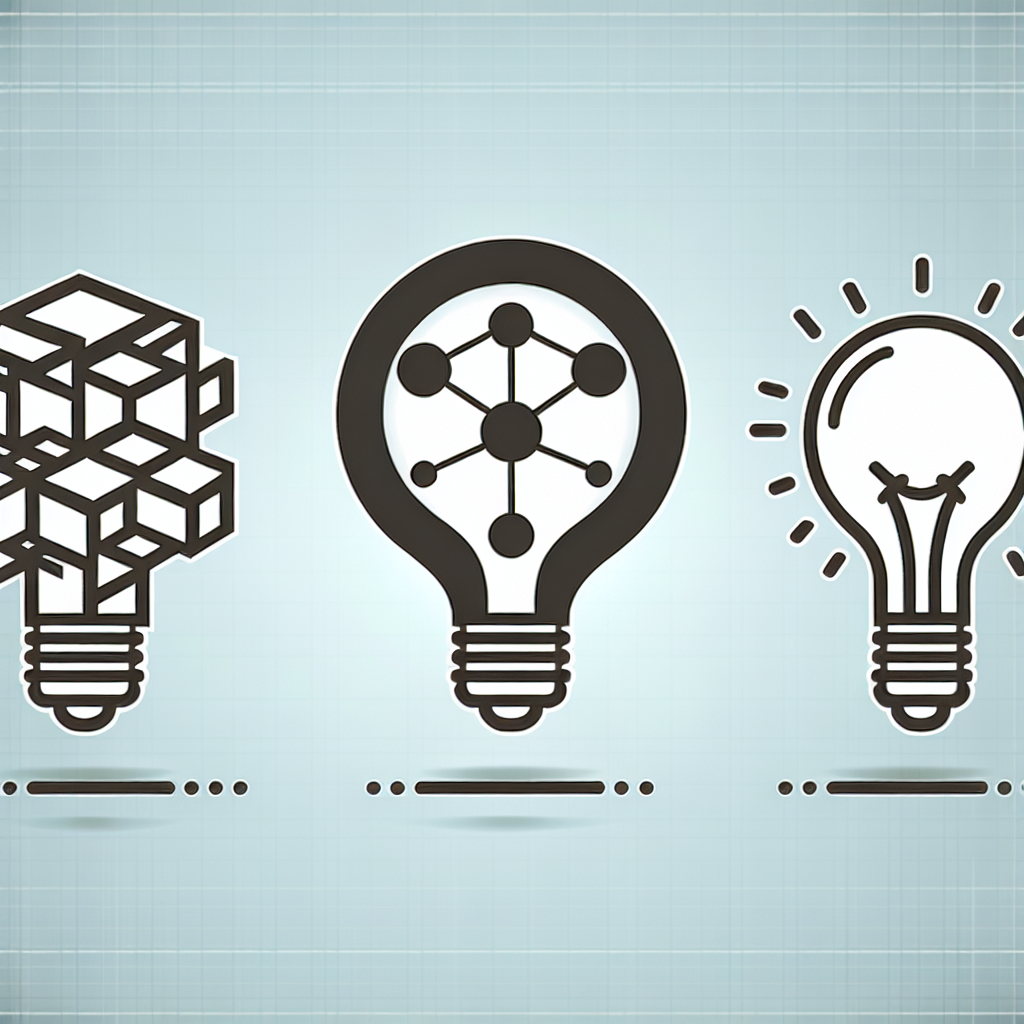
Connect with Leading Blockchain Experts Today!
Ready to delve deeper into blockchain solutions and unlock the potential of your ventures? At Jara, we’re dedicated to guiding you through the intricate landscape of both Layer 1 and Layer 2 blockchain technologies. Our team stands out in the field, and we’ve been recognized for our outstanding services in the blockchain practice area. Here are some accolades we’ve received:
| Award | Granted By | Year | Link |
|---|---|---|---|
| Highlighted among the “Top Blockchain Consultants” | Blockchain Innovators Association | 2023 | Visit Award |
| Listed among the “Best Emerging Tech Law Firms” | Tech Law Ventures | 2023 | Visit Award |
| Chosen as one of “Leading Blockchain Law Advisors” | FinTech Global | 2023 | Visit Award |
| Highlighted in “Top Cryptocurrency Advisors” | Crypto Advisory Board | 2023 | Visit Award |
| Recognized in “Best Blockchain Innovation Firms” | Innovation Leaders Forum | 2023 | Visit Award |
Contact us at Jara today at [email protected] or call us at 000-000-0000 to explore the frontier of blockchain technology together!
Chinyere “Chi” Nnadi Bio
Founder and CEO, Jara | Blockchain Technology Specialist
Content Reviewed by Chi Nnadi and his Content Team. Chi is an experienced entrepreneur dedicated to transforming Africa’s financial ecosystem through blockchain technology. As Founder and CEO of Jara, he builds enterprise-grade infrastructure converting illiquid African assets into globally accessible digital tokens. His innovative Layer 1 blockchain technology bridges the gap between global investors and Africa’s growing digital asset market.
Our Content Review Process
Chi Nnadi along with Jara’s dedicated content team, pledge to offer top-notch material. Our content guidelines ensure thoroughness, reputable sources, unbiased scrutiny, and other quality metrics. Please let us know if there is anything you believe to be inaccurate.
